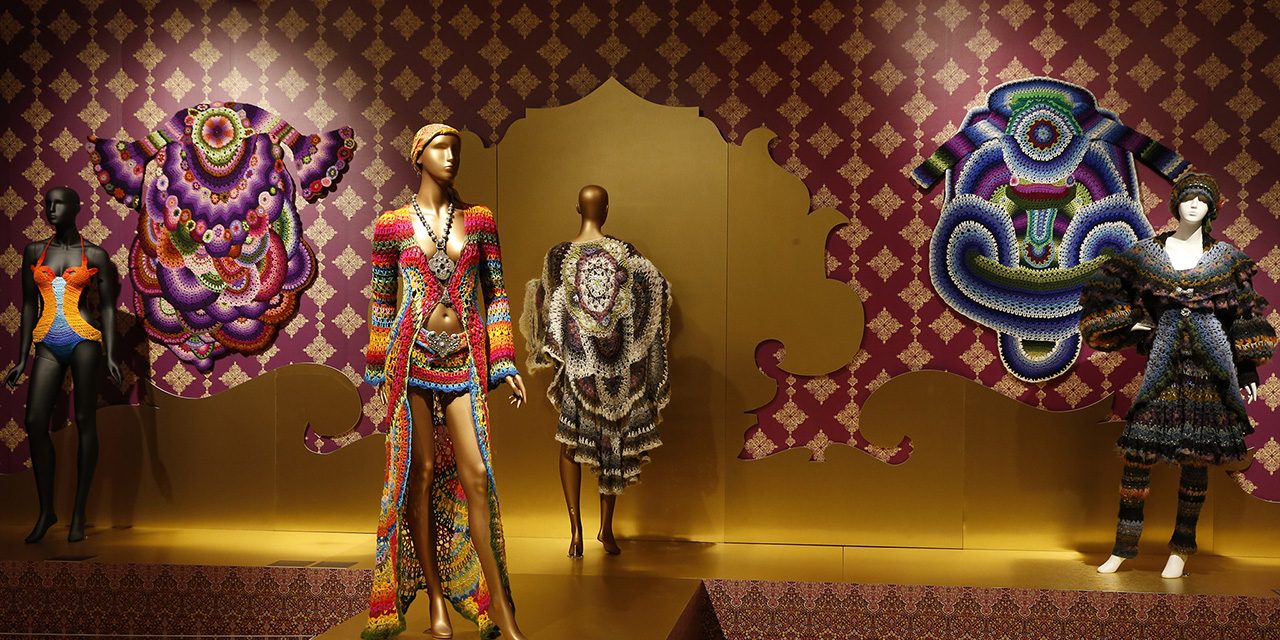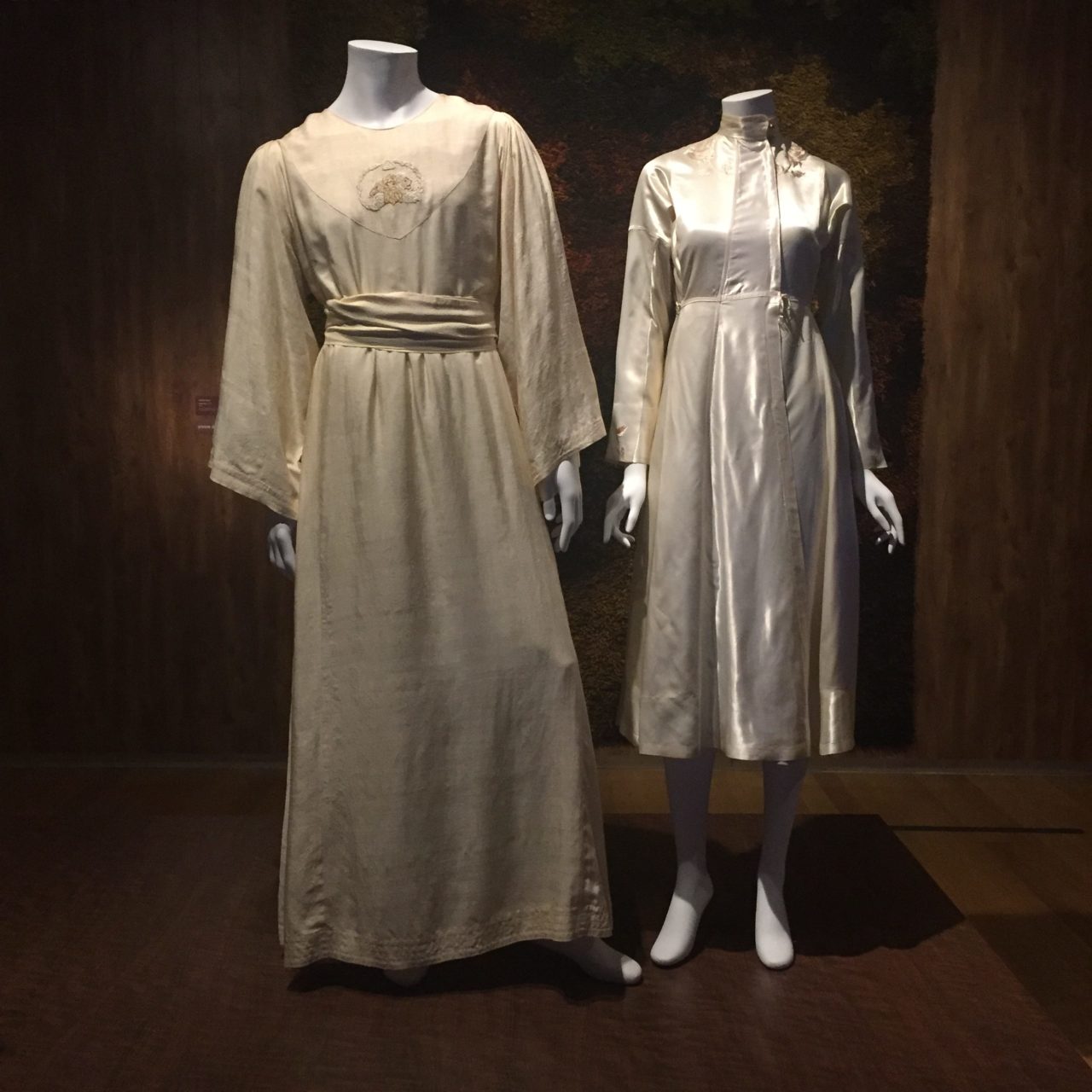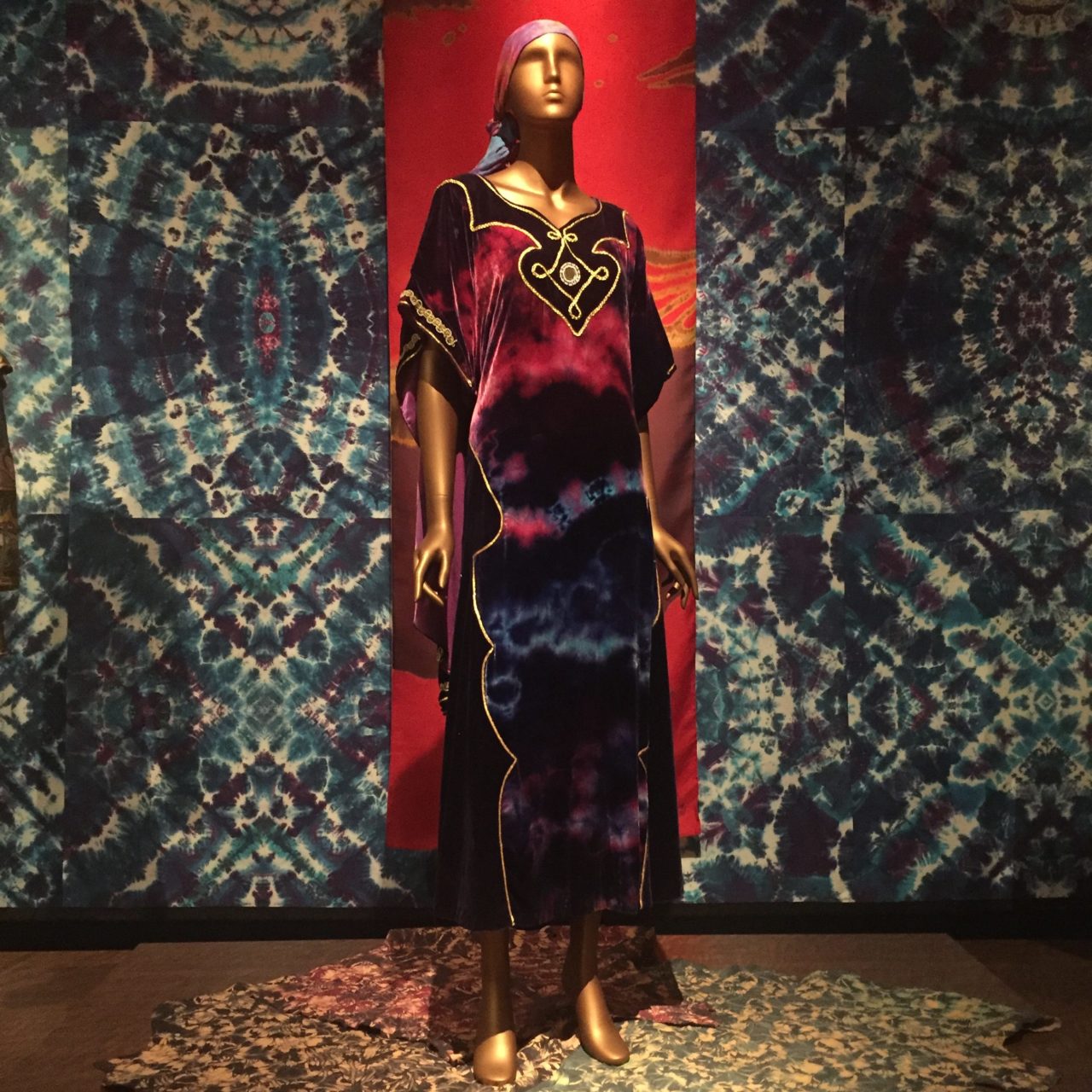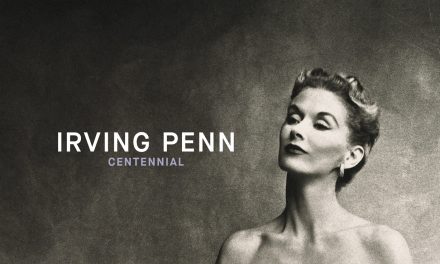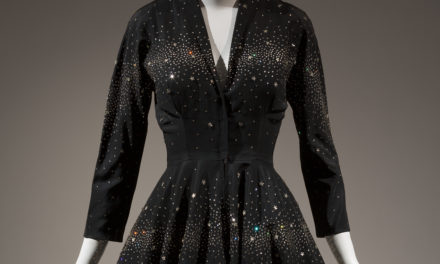Today’s idea of political support is buying a t-shirt and promoting a specific candidate. However in the 1960s and 1970s, the idea that many clothes were handmade was a political statement on its own.
“Counterculture” in America was aimed at resisting societal norms and mass-consumerism, while promoting self-sufficiency and identity.
The Museum of Art and Design’s exhibition Counter-Couture: Handmade Fashion in an American Counterculture displays many pieces of clothing and art that reflect the sartorial ideals of the 1960s and 70s. Curated by Guest Curator Michael Cepress, the show is organized into five divisions: Funk & Flash, Levi’s Denim Art Contest, Couture, Performance and Psychedelic Style.
On display are pieces from Levi Strauss & Co.’s 1973 marketing campaign contest where they invited customers to send images of their home-embellished denim creations, which were published in a book and displayed in a 1974 Museum of Art and Design exhibition (Fig. 1). These creations reflected the ideas of self-expression and individuality of the time.
Clothing was, in some circumstances, also a reflection of religious cults and spirituality. As the curator explains, “Unique forms of dress and adornment, usually handmade by the community, expressed the group’s ideology and fostered shared identity” (Wall text). The robes in Fig. 2 are two examples from 1970 of what people were wearing within groups such as the Source Family (California/Hawaii) and the Love Family (Washington). Within these groups, leaders fostered spirituality of the mind and soul, as well as a strict adherence to their lifestyle of diet and dress, and communal rituals and activities.
Bright colors were also a popular way of expressing one’s self in the 1970s, and the exhibit has no shortage of colorful pieces on display. A generation who looked for change found it and fought for it through embroidery, patchwork, and tie-dye, among many other things (Fig. 3 and 4). The three dresses in Figure 3 represent designs created during the Wearable Art movement in the 1970s. Their bold colors and global-inspired patterns represent multiculturalism. The dress in Figure 4 was designed by Zubin Levy in 1970, and is an example of his discovery and love of tie-dye, which Levy eventually helped popularize. The handmade clothes of this decade were truly works of art.
The exhibition runs from March 2 to August 20, 2017.
Fig. 1 – Left top- Sheri E. Wolf Boraz. Chromatic Color Study on Denim Vest, 1976. Embroidered denim. Left bottom- Sheri E. Wolf Boraz. Walking Sculpture Blue Jeans, 1972. Embroidered denim. Center- Anna Polesny. Fancy Jacket, 1974. Stitched and embellished Levi’s Denim jacket, fur. Right top- Billy Shire. Welfare (winner of Levi’s Denim Art Competition), 1975. Levi’s denim jacket, rivets, rim sets, furniture studs. Right- Billy Shire. Sneed, 1973. Leather, furniture studs, bicycle reflectors. Right bottom- Billy Shire. My Personal Belt, 1972-95. Leather, rivets, luggage-bottom studs. Author’s own image.
Fig. 2 – Left-Bliss Israel. Love Israel’s Meeting Robe, c. 1970. Silk, embroidery. Courtesy Honesty and Love Israel. Right- Mary Eaton. Honesty Israel’s Meeting Dress, c. 1970. Silk, embroidery. Courtesy Honesty and Love Israel. Author’s own image.
Fig. 3 – Yvonne Porcella. Patchwork Dresses, 1972. Fabric, ribbons, mola. Courtesy of Yvonne Porcella and of the Bellevue Arts Museum. Photo Credit: Rex Rystedt. Source: MAD Museum
References:
- Cover Image – Installation view of Counter-Couture: Handmade Fashion in an American Counterculture. Photo by Jenna Bascom. Courtesy of the Museum of Arts and Design.
- Wall text. Spirituality and Religious Cults. “Counter-Couture: Handmade Fashion in an American Counterculture,” 2017. Museum of Art and Design, New York.

